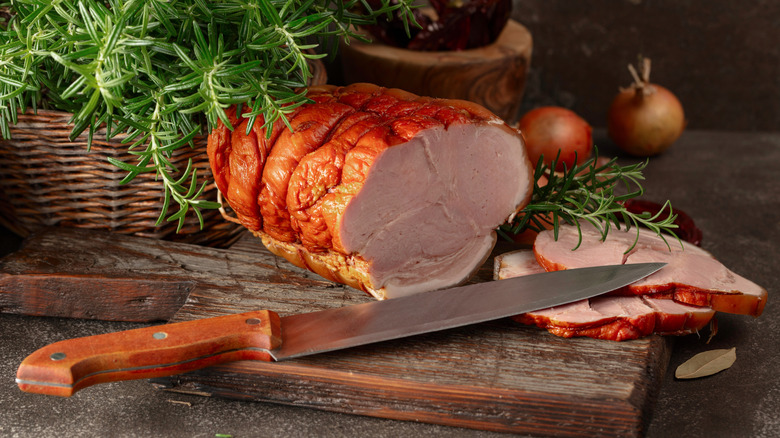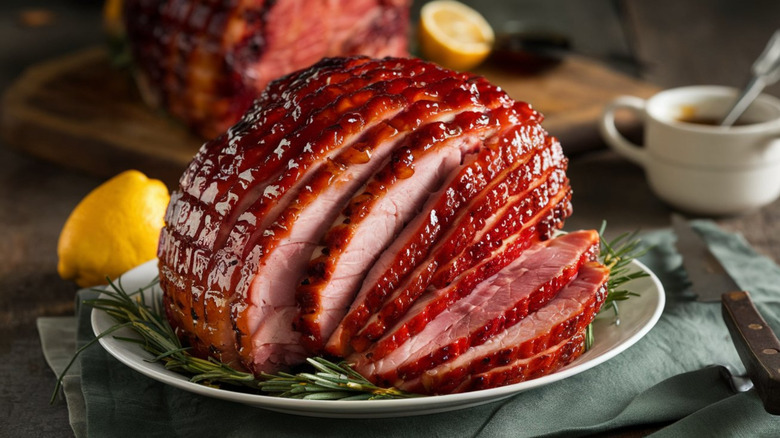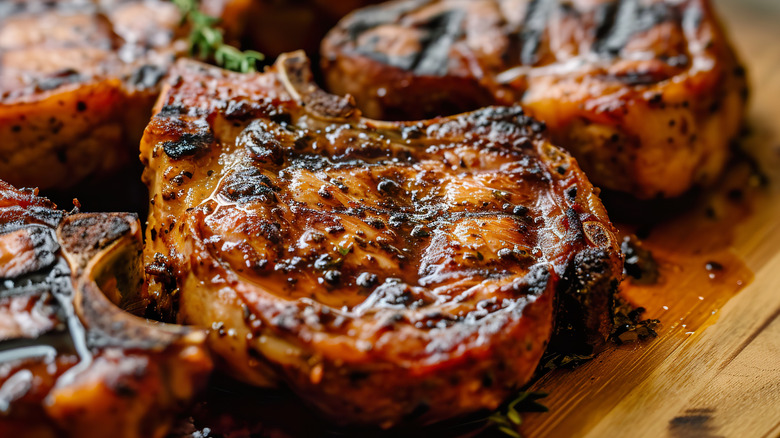Is There A Difference Between Ham And Pork?
Many people's experience with meat is limited to picking up a shrink-wrapped, pre-trimmed package at the supermarket or their local butcher. While this process is undoubtedly convenient, it can also result in even experienced home chefs feeling less than confident about the origin and differences between the cuts and products they're enjoying. One of the most common of these is the distinction between ham and pork. The two terms refer to distinct things, though they are closely related.
To start, it's worth acknowledging the most significant similarity between the two, one that may be the root of much of the confusion: Both types refer to meat that comes from pigs. However, while all ham is pork, not all pork is considered ham.
Where the differences emerge are two key factors: the location on the animal and, often, the preparation and treatment of the meat before it reaches your grocery store or butcher. Of course, there's a lot more to these classifications than some may expect.
Ham: many varieties of one delicious cut
Ham is a relatively simple, well-defined concept. It's the hind leg section of a pig that is typically cured, smoked, or both. Depending on how the meat is seasoned and what exact curing or smoking process is used, vastly different results can emerge, from spicy, savory options to sweet or herb-forward varieties.
Beyond this general definition, there's a variety of different ham types out there, each with its own unique characteristics. For Americans, there's both city and country ham. The former is treated by a short period of wet-brining that produces a moister, mild flavor, as opposed to the latter, which is dry-brined for an extended period, creating a saltier, more robust taste. A variety of pig-eating cultures around the world have also made their own contributions to the world of ham, from Italy's prosciutto to Spain's Serrano to Germany's Black Forest variety.
Less commonly, shoppers will also find fresh hams, which haven't been treated at all and are essentially uncooked pig legs ready to be prepared in your desired style. At the end of the day, the location from which it's cut is the only ultimate defining factor for what makes a ham.
Pork: diverse types of one delicious meat
Pork has a much more expansive definition. It's a catch-all term for any cut of meat that comes from a pig, including pork chops, shoulder, belly, ribs, and (of course) ham. That dramatically expands your options when considering pork recipes that make delicious dinners. Pork is most commonly sold raw, allowing home cooks to use their own preparation methods, which can include grilling, roasting, smoking, pressure cooking, stewing, and more.
Although we've mentioned the many international variations on ham, pork boasts an even more noteworthy distinction: It's the most-consumed type of meat in the world according to the United Nations Food and Agriculture Organization, making up 36% of all meat eaten worldwide (via USDA). There are many reasons for this, such as its versatility and accessibility, but its many delicious cuts shouldn't be discounted.
In the end, it's a straightforward distinction that should be easy to remember: Ham is a specific cut (and often preparation) of pork, which is the broad term for all pig meat and products. No matter which you prefer, simply knowing the difference goes a long way toward preparing each type appropriately.


